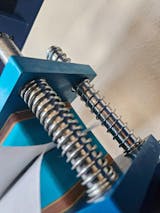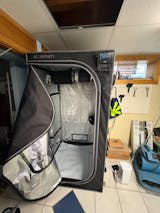People were gardening long before someone invented a way for you to grow tomatoes on your patio.
It was how they ate. A source of nourishment. It was how they survived.
We’re no longer a society where everyone needs to grow their food to survive. We can head down to the grocery store and get everything we need.
So why do people still garden?
Obviously, there are numerous reasons, but one of the primary ones is that it keeps us healthy. People who garden tend to eat more fruits and vegetables. and the food they eat is also without the extra pesticides and has higher nutrient content.
Plus, getting down and playing in the dirt is good for your mental health as well. Gardening also counts as moderate exercise, which can help prolong your life.
If you’re interested in gardening, read on. This article will help get you started.
Gardening Tips For Beginners

Here are some simple tips every new gardener should use.
Create A Portfolio Of Your Garden
This will help you keep track of everything in your garden. Get a cheap photo album to store your plant tags and sticks. Then, get as detailed as you like, including things like where you bought the seed and where it is in your garden.
Create A Non-Stick Shovel
This will make dealing with that mucky soil much easier. Spray your shovel with a silicone spray and watch the muck slide right off.
Bite-Proof Your Bulbs
Use poultry netting to guard your bulbs against the critters. Depending on what you’re growing, you can either remove the cloth in early spring or let the plants grow through the holes.
Make A Shelf On Your Wheelbarrow
Cut a piece of plywood about the same size and shape as your wheelbarrow. Use a few cleats on the sides to keep it from slipping off. Now you can carry your soil under the shelf, and your tools and potted plants on top.
Lighten Your Load
Those large flower pots can get heavy once they’re full of soil. Fill your pots 1/3 to 1/2 full of packing peanuts. Then, put a piece of landscape fabric on top of the peanuts. This not only makes your pot lighter, but it also helps with drainage.
What If You Don’t Have Room to Garden?

You may think this is all fine and good for some people, but you don’t have space to garden.
I bet you do. Even if you live in a tiny Manhattan apartment, you have at least a little bit of room to garden.
Apartment Gardening
Apartment gardening is just that, a garden that will grow in your apartment. There are several ways you can bring the outdoors inside and grow a flourishing garden inside your apartment.
Even if you don’t live in an apartment, you can still use the principles to grow a garden in your home. Bringing the garden inside is a great way to get your young kids involved. It’s easier for them to plant in a small pot instead of your big yard.
What do you need to create an apartment garden?
You don’t need much. You can even use things you already have lying around your house. You’ll be surprised how easy it will be to get your garden started in your apartment.
Do you enjoy the occasional glass of wine with friends? Who doesn’t? Did you know you can repurpose wooden wine boxes into an herb garden?
Maybe you’re limited on space - so limited that you had to buy a hanging shoe organizer to save room in your closet.
If so, buy another shoe organizer. You can use it to plant a garden inside your house in any room with a door. Use it to plant mixed leaf salad, herbs, sorrel, peas, and mini tomatoes.
Want your apartment to smell AMAZING without the use of Febreeze or other fake scents? Just grow some oranges in your living room.
Oranges need at least 5 hours of sunlight a day, but with the right pot, soil, and regular watering, you can grow your own. If you don't get enough sunlight, you can always add some supplemental grow lights, like T5 LED bars.
Container Gardening
If you decide to use any of the methods above to start a garden, you’ll be using container gardening, a technique.
Container gardening is a great way to make up for lack of space, makes pest control more manageable, and is an excellent way to introduce your children to gardening.
Just about any vegetable you can grow in your backyard will also grow in a container. Tomatoes, peppers, eggplant, green onions, beans, lettuce, squash, radishes, and parsley are all great choices. You can also do pole beans and cucumbers, but you will need a lot more space for these.
Lasagna Gardening

Now we can start breaking down the different forms of gardening for people with some extra space in their backyards. Let’s start with lasagna gardening.
It sounds delicious, but now, you won’t be growing actual lasagna. Lasagna gardening is a method of gardening that allows you to achieve more with less work.
Lasagna gardening is a no-dig, no-till organic gardening method that results in rich, fluffy soil with little effort from the gardener. Instead of all of the digging and tilling, you use layers instead.
You don’t have to remove any weeds. You don’t have to double dig. You don’t have to work the soil at all. The first layer of your garden will either be made up of corrugated cardboard or newspaper. Just lay it down wherever you decide to garden, and wet it down. This will start the decomposition process. It will also attract earthworms to loosen the soil.
From there, you start layering everything else. Anything you’d throw in a compost pile can be used in your lasagna garden.
Guerrilla Gardening

Next up is guerrilla gardening. This one sounds exciting, and it definitely can be. It also has the potential to get in you in a bit of trouble, so be mindful of where you put your garden.
Guerrilla gardening is the act of planting a garden unauthorized on vacant public or private land. Some people do it to protest land rights and reform, and others to fix up the eyesores in their neighborhoods.
Depending on your reason for the gardening, you can do it at night when there are fewer eyes on you or during the day to encourage your community to participate in its beautification.
Guerrilla gardening involves using some of the gardening tactics we’ve already discussed. For example, you can do container gardening and attach containers to old signs and posts, or you can do lasagna gardening, which doesn’t require preparing the soil.
When you start guerrilla gardening, it’s a good idea to spread the word or use signs to let people know what you’re trying to accomplish. This will encourage people to help you with your garden and start gardens of their own.
The food grown in these gardens can be used for many things. You can keep it, give it to your friends, or continue to give back to your community by donating it to a local food bank or rescue mission.
Do It For The Kids
Gardening is a great way to start teaching your kids the benefits of clean, healthy eating. What better way to convince them to eat their veggies than by getting them to grow their own?
Also, as we've already learned, it doesn’t have to be complicated or eat up much room in your yard. A few containers in a well-lit spot will do the trick. The purpose here isn’t to grow a robust crop of fruits and veggies. It’s to teach the kids how gardening and healthy eating can impact their lives.
It can affect their BRAIN. Studies show that kids who garden score higher in science than those who do not. It can open their mind to ask questions like why the plants need water and sun. Those questions can open a rabbit hole of questions that can lead to endless teaching opportunities.
It can affect their BODY. They’ll have fresh fruits and veggies to eat that they grew themselves, and they’ll get to play in the dirt. Getting down and dirty in the earth seems counterintuitive to our "hand-sanitizer" culture, but it has proven benefits. Getting dirty and the exposure to dirt and germs can improve a child's immune system, leading to better overall health.
Start Your Garden Today

Are you ready to start gardening today? We’ll focus on a couple of plants that we can get in the ground today.
What are we planting?
We’re going to plant radishes and salad greens like lettuce, spinach, and arugula. Everything can be planted in the spring and fall months. The radishes will be ready to harvest in just a few weeks, and the salad greens can be picked almost year round.
Soil
The soil for the radishes needs to be rich in organic matter and not compacted. If you’re working with clay-like sand, add some sand to loosen it and improve drainage. Make sure you remove any rocks from your garden or planter before planting.
The soil for the salad greens also needs to be loose with good drainage so it’s moist but not soggy. About a week before you plant, you need to feed it with organic matter. The seeds will be small, so make sure the soil is well tilled.
Location
Plant the radishes in a sunny spot. If they’re planted in too much shade, they’ll spend all their energy growing bigger leaves. Don’t even put them in a spot where neighboring plants can shade them.
The lettuce needs to be planted in full sun as well. If you plant in the dead of summer, plant the greens under plants that can provide shade to help keep the plants cool.
If you're planting indoors in a location with no or not enough natural light, you'll need an artificial grow light to ensure your plants get the light they need to grow properly. For a small garden, fluorescent lights work well, but overall, LED grow lights are the most efficient and cost-effective. This guide will help you find the right one for your needs.
Water
Immediately following planting, water your lettuce thoroughly. The lettuce will tell you when it needs to be watered. If the leaves are wilting, water them.
The radishes need consistent moisture. The soil needs to be moist but never waterlogged.
What Are You Waiting For?
If you’re interested in gardening, nothing is holding you back. You can garden in your apartment, on your patio, or anywhere in your yard. And it doesn’t have to be complicated; all you need to do is throw down some newspaper and get to work.
So, what are you waiting for? Let’s fill that shoe organizer with produce. Turn that old patch of unused land into a community garden. Get your kids outside in the dirt and open their minds to the world of gardening.
You won't regret it.














Leave a comment